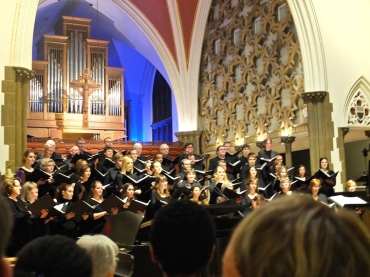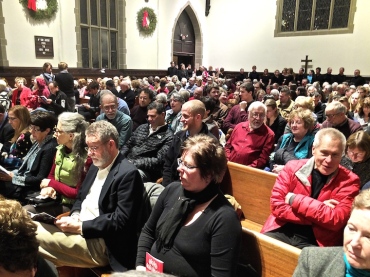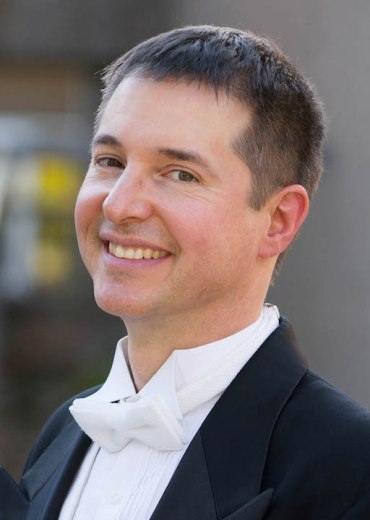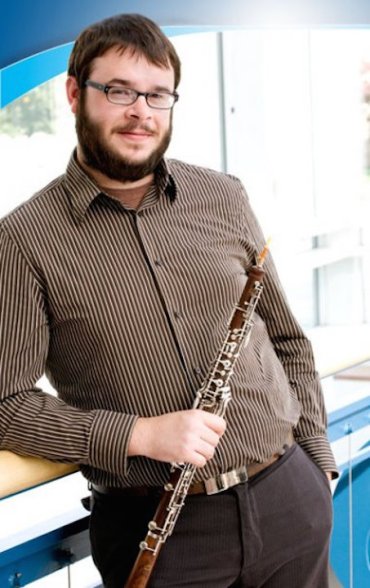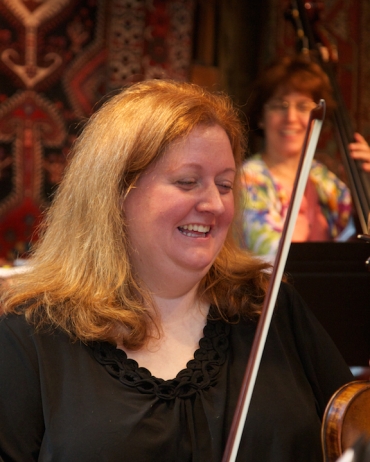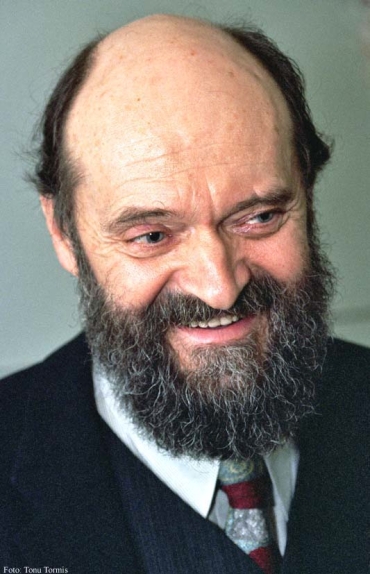The Well-Tempered Ear
Here’s music to mark Mother’s Day
Leave a Comment
PLEASE HELP THE EAR. IF YOU LIKE A CERTAIN BLOG POST, SPREAD THE WORD. FORWARD A LINK TO IT OR, SHARE IT or TAG IT (not just “Like” it) ON FACEBOOK. Performers can use the extra exposure to draw potential audience members to an event. And you might even attract new readers and subscribers to the blog.
By Jacob Stockinger
This Sunday is Mother’s Day 2024.
The holiday celebrating mothers, grandmothers and women whose are like mothers to us is celebrated around the world in North America, South America, Europe, Asia and Africa.
Mothers have long provided inspiration to composers, performers and listeners.
The Ear’s mom loved to hear him practice and play Chopin’s Waltz in E minor and Rachmaninoff’s popular Prelude in C-sharp minor (played by the composer in the YouTube video at the bottom), which dropped out of fashion for many years but now seems back in favor, especially as an encore.
Mom was proud of her pianist son and once even let the telephone sit near the piano when I was playing the Rachmaninoff for someone who had called her long-distance and wanted to hear more of what was until then just background noise to her conversation.
Anyway, here is one of the best pieces I have seen for you to read and listen to as you celebrate Mother’s Day. Some of the music is sure to be very familiar, other music less so.
Here are 20 pieces, with brief introductions and translations, about mothers from the website Interlude in Hong Kong:
Here’s to you, Mom.
Do you have a piece to dedicate to your mom?
Did your mother have a favorite piece she liked to hear?
The Ear wants to hear.
Tags: #BlogPost, #BlogPosting, #FacebookPost, #FacebookPosting, #Mother'sDay, #UnitedStates, #YouTubevideo, 2024, Africa, alto, Amy Beach, Android, Apple, Arts, Asia, asian, audience, Bach, background, background noise, Baroque, beach, Benjamin Britten, Bing, blog, brass music, brief, Britten, Cavalleria Rusticana, celebrate, Cello, Chamber music, Charles Ives, Child, children, China, Chinese, Chopin, choral music, Christianity, church, Clara Schumann, Classical music, classicalmusic, composer, Concert, concerto, conversation, cradle, daughter, dedicate, duckduckgo, Dvorak, encore, Europe, Facebook, Family, fashion, favor, favorite, female, God, Google, Google Alert, Google Alerts, Google Search, Grainger, grandma, grandmother, hear, Holiday, Hong Kong, hymn, inspiration, inspire, interlude, introduction, IOS, Ireland, Ives, Jacob Stockinger, Johann Sebastian Bach, John Ireland, John Philip Sousa, John Tavener, Josef Suk, key, link, listener, long-distance, Love, Ludwig van Beethoven, lullaby, Madison, Mahler, march, Mary, Mascagni, matriarchal, matriarchy, Microsoft, Microsoft Bing, mom, Mother, Mother Goose, motherhood, Mothers Day, Mozart, Music, my, noise, North America, online, opera, Orchestra, Parent, Parenting, Paul Bunyan, Percy Grainger, performer, phone, Pianist, Piano, play, popular, practice, pray, Prelude, pride, proud, Puccini, Rachmaninoff, Rachmaninov, Ravel, relic, Religion, Richard Strauss, Safari, Schumann, share, singer, soing, son, Sonata, song, soprano, Sousa, South America, Strauss, Suk, Sunday, Suor Angelica, symphony, tag, Tavener, telephone, The Ear, translation, Twitter, U.S., United States, University of Wisconsin-Madison School of Music, University of Wisconsin–Madison, Viola, Violin, virgin, vocal music, Website, Well-Tempered, Well-tempered Ear, welltempered, Wisconsin, Wolfgang Amadeus Mozart, women, WordPress, Wordpress.com, world, worldwide, X, years, you, YouTube
Classical music education: This Sunday the Madison Youth Choirs will present their Winter Concert Series celebrating “Shakespeare 400 “
Leave a Comment
By Jacob Stockinger
This winter, the Madison Youth Choirs are joining cultural institutions around the world by celebrating the 400th anniversary of the death of William Shakespeare (below) and his ongoing legacy.
Singers of various ages will perform musical settings from the plays Twelfth Night, A Midsummer Night’s Dream, Love’s Labour’s Lost and The Tempest by composers including William Byrd, Thomas Morley, Henry Purcell, Franz Schubert, Felix Mendelssohn, Benjamin Britten, Giuseppe Verdi, Cesar Franck, Ralph Vaughan Williams, Gerald Finzi, John Rutter and others.
Examining the role that motif, tension, structure and rhythm play in the repertoire and Shakespeare’s vast body of work, the choirs will explore the elements that combine to create compelling art that stands the test of time.
The MYC Winter Concerts, “Shakespeare 400,” will take place this Sunday, Dec. 11, at the First Congregational United Church of Christ (below), 1609 University Ave., near Camp Randall stadium.
Here is the schedule: 1:30 p.m. Girl choirs; 4 p.m. Boy choirs; 7 p.m. High School Ensembles
Tickets will be available at the door. Admission to each of the three concerts is $10 for the general public, $5 for students 7-18, and free for children under 7
PROGRAMS
Here is the repertoire for the MYC 2016 Winter Concert Series “Shakespeare 400”:
1:30 p.m. Concert (Featuring MYC Girlchoirs)
Choraliers
“Hey Ho! To the Greenwood” by William Byrd
“Spirits” by Douglas Beam
“Orpheus With His Lute” by Ralph Vaughan Williams
“Double, Double Toil and Trouble” by Leeann Starkey
photo
Con Gioia
“When Icicles Hang by the Wall” by David Lantz III
“You Spotted Snakes” by Toby Young
“Ban Ban Caliban” by Dan Forrest
Capriccio
“Hark! The Echoing Air” by Henry Purcell
“Blow, Blow Thou Winter Wind” by Sarah Quartel
“Philomel with Melody” and “I Will Wind Thee in My Arms” by Cary Ratliff
“It Was a Lover and His Lass” by John Rutter
Cantabile
When Icicles Hang” by Stephen Hatfield
“Che faceste” from Macbeth (sung in Italian) by Giuseppi Verdi
4 p.m. Concert (Featuring MYC Boychoirs)
Combined Boychoirs
“One December, Bright and Clear” Traditional Catalonian carol, arr. By Wilberg
“Panis Angelicus” by Cesar Franck
Purcell
“Chairs to Mend” by William Hayes
“Blow, Blow Thou Winter Wind” by John Rutter (heard in the YouTube video at the bottom)
“The Coasts of High Barbary” Traditional English sea song, arr. By Julseth-Heinrich
Britten
“Blow, Blow, Thou Winter Wind” by Roger Quilter
“Full Fathom Five” by John Ireland
“Who is Silvia” by Franz Schubert
Holst
“Full Fathom Five” by Robert Johnson
“Sing We and Chant It” by Thomas Morley
Ragazzi
“Come Away, Death” by Gerald Finzi
“The Witching Hour” by Brandon Ayres
7 p.m. Concert (Featuring High School Ensembles)
Cantilena
“The Willow Song” by Arthur Sullivan
“Willow, Willow, Willow” by Charles H.H. Parry
“Fair Oriana Seeming to Wink at Folly” by Robert Jones
“You Spotted Snakes” (from A Midsummer Night’s Dream) by Felix Mendelssohn
“Give Them Thy Fingers” by Stefan Kalmer
Ragazzi
“Four Arms, Two Necks, One Wreathing” by Thomas Weelkes
“Come Away, Death” by Gerald Finzi
“And Draw Her Home with Music” by Nancy Hill Cobb
“The Witching Hour” by Brandon Ayres
Cantabile
“Che faceste” from Macbeth (sung in Italian) by Giuseppi Verdi
“Come Away, Death” by Roger Quilter
Selections from A Midsummer Night’s Dream by Benjamin Britten
“When Icicles Hang” by Stephen Hatfield
Cantabile and Ragazzi
“Ave Verum Corpus” by William Byrd
“Jingle, Bells!” by James Pierpont, arr. by David Wilcocks
These concerts are generously endowed by the Diane Ballweg Performance Fund with additional support from the American Girl’s Fund for Children, BMO Harris Bank and the Wisconsin Arts Board.
About the Madison Youth Choirs (MYC): Recognized as an innovator in youth choral music education, Madison Youth Choirs (MYC) welcomes singers of all ability levels, annually serving more than 1,000 young people, ages 7-18, through a wide variety of choral programs in our community.
Cultivating a comprehensive music education philosophy that inspires self-confidence, personal responsibility, and a spirit of inquiry leading students to become “expert noticers,” MYC creates accessible, meaningful opportunities for youth to thrive in the arts and beyond.
For further information, contact: Nicole Sparacino, Madison Youth Choirs, Nicole@madisonyouthchoirs.org or call (608) 238-7464
Tags: A Midsummer Night's Dream, arrangements, Art, Arthur Sullivan, Arts, Baroque, Benjamin Britten, boy choir, boychoir, boys, Byrd, cantabile, Capriccio, Carol, Catalonia, Cesar Franck, Chamber music, chant, choral music, Classical music, comedy, David Wilcocks, death, drama, elementary school, folk song, Franz Schubert, Gerald Finzi, girls, girls choir, high school, Holst, Ireland, Italian, Jacob Stockinger, John Ireland, John Rutter, legacy, Love's Labour's Lost, lute, Madison, Madison Youth Choirs, Mendelssohn, Middle school, motif, Music, Music education, Orpheus, Parry, plays, Purcell, Ralph Vaughan Williams, rhythm, Schubert, sea, Shakepseare, snake, structure, Tempest, tension, Thomas Morley, tradition, traditional, tragedy, Twelfth Night, United States, University of Wisconsin-Madison School of Music, University of Wisconsin–Madison, Verdi, vocal music, William Shakespeare, William Shakespeare's plays, willow, Wind, winter, Wisconsin, Wisconsin Arts Board, youth choirs, YouTube
Classical music: It’s Christmas Eve — a good time to revisit how the Wisconsin Chamber Choir imaginatively and successfully used many versions of the “Magnificat” to combine the holiday seasonal and the musically substantial
2 Comments
By Jacob Stockinger
Here is a special posting that is perfect for Christmas Eve. It is a review written by frequent guest critic and writer for this blog, John W. Barker. Barker (below) is an emeritus professor of Medieval history at the University of Wisconsin-Madison. He also is a well-known classical music critic who writes for Isthmus and the American Record Guide, and who for 12 years hosted an early music show every other Sunday morning on WORT FM 89.9 FM. He serves on the Board of Advisors for the Madison Early Music Festival and frequently gives pre-concert lectures in Madison.
By John W. Barker
On last Saturday night, at the fully filled Grace Episcopal Church on Capitol Square, director Robert Gehrenbeck led the Wisconsin Chamber Choir (below) through a program that managed blessedly to combine the seasonal with the musically substantial.
The program was constructed with very great insight and imagination, around the Magnificat, the hymn in the Gospel of St. Luke that the Virgin Mary and St. Elizabeth are supposed to have improvised during their Visitation.
The Latin version is probably, with the exception of passages from the Mass Ordinary,, the most frequently set of all liturgical texts, given its varied utilities — not only for Advent celebrations but as the culminating part of the Office of Vespers.
Of the absolutely innumerable settings made of this text and its counterparts through the ages, Gehrenbeck (below) – who directs the choral program at the University of Wisconsin-Whitewater — selected six versions, mingling them among related musical works. The program was organized in six segments, three given before intermission, three after.
An initial German segment was dominated by the Deutsches Magnificat, which uses Martin Luther’s translation, a late and very great Baroque masterpiece for double choir by Heinrich Schütz (1585-1672).
That was supplemented with a five-voice motet by Johannes Eccard (1553-1611) that absorbs some of the Magnificat imagery, and a textually unrelated double-choir German motet by the post-Baroque Gottfried Homilius (1714-1785) — a piece that reminded me strikingly of the neo-polyphonic style that Johannes Brahms would develop a century later for his own motets.
Johann Sebastian Bach found his place with three of the four Advent texts that the composer inserted in the original E-flat version of his Latin Magnificat setting. One of those adapts the chorale Vom Himmel hoch (From Heaven High), so the three were prefaced by a chorale-prelude for organ by Johann Pachelbel (1653-1706) that elaborates on that hymn. (NOTE: Bach’s lovely full choral version of the Magnificat can be heard in a YouTube video at the bottom. It features conductor John Eliot Gardiner, the Monteverdi Choir and period instruments played in historically informed performances.)
Then we had settings of the Latin text.
First, one that alternates plainchant on the odd-numbered verses with organ elaborations by Johann Erasmus Kindermann (1616-1655) on the even ones.
Second, we had a full setting by the late-Baroque Czech composer, Jan Dismas Zelenka (1679-1745), with a skeletal “orchestra” reduced to oboe, violin and cello played beautifully by, respectively, Andy Olson, a graduate of Lawrence University in Appleton, Wisconsin, who works at Epic and who has performed with the Middleton Community Orchestra; Laura Burns of the Madison Symphony Orchestra; and Eric Miller of the Wisconsin Baroque Ensemble.
A clever venture was made into Orthodox Christian treatments of the text in Church Slavonic. The full text in that form was given not in one of the more standard Russian Orthodox settings, but in a highly romanticized treatment by César Cui (1835-1918), a member of the “Mighty Five” group.
This was supplemented with beautiful settings of the Bogoróditse devo and the Dostóyno yest hymns of the Orthodox Divine Liturgy, both of which paraphrase parts of Luke’s text: the former composed by the Estonian modernist Arvo Pärt (below, b.1935), the latter by the Russian Georgy Sviridov (1915-1998).
English-language treatments finally came with one of the settings by Herbert Howells (1892-1983) of the Magnificat and Nunc dimittis pairing that is standard in the Anglican church. This was prefaced by a simple organ elaboration by John Ireland (1879-1962) of an unrelated English Christmas song.
The final group drew back from the Magnificat motif by presenting two works each of two contemporary American composers who, for their time, are able to write with lovely and idiomatic results for chorus: Peter Bloesch (below top, b. 1963) and Stephen Paulus (below bottom, 1949-2014).
Each was represented by an arrangement and an original piece. Paulus’ treatment of the traditional “We Three Kings” carol went with his setting of a charming poem by Christina Rosetti (slightly suggestive of what Gian-Carlo Menotti portrayed in his opera Amahl and the Night Visitors).
Bloetsch’s elaboration of an old French Christmas song was balanced with his lovely setting of a 15th-century poem that does vaguely hint at some verbiage of the Magnificat after all. Both works by Bloetsch, who was in the audience, received their world premieres.
The 53-voice choir sounded superb: beautifully balanced, precise, sonorous and often simply thrilling. Along the way, four women from the ranks delivered solo parts handsomely. Mark Brampton Smith (below) was organist and pianist as needed.
It proved a superlative seasonal offering, in all, organized with a rationale that was both ingenious and illuminating.
For more information about the Wisconsin Chamber Choir and its future concerts, go to:
http://www.wisconsinchamberchoir.org
Tags: Advent, American Record Guide, Arts, Arvo Part, Bach, Baroque, Carol, Cello, Cesar Cui, Chamber music, choral music, Chorale, Christmas, christmas eve, church, Classical music, Czech, Early music, English, Estonia, German, Germany, gospel, Heinrich Schütz, Herbert Howells, historically informed performance practices, History, hymn, Isthmus, Jacob Stockinger, Jan Dismas Zelenka, Johann Pachelbel, Johann Sebastian Bach, Johannes Brahms, Johannes Eccard, John Eliot Gardiner, John Ireland, John W. Barker, Kindermann, Latin, Lawrence University, Lawrence University Conservatory of Music, liturgy, Madison, Madison Early Music Festival, Madison Symphony Orchestra, Magnificat, Martin Luther, mass, Medieval, MEMF, Monteverdi Choir, motet, Music, Oboe, Orchestra, organ, period instruments, Peter Bloesch, Piano, poem, Poetry, polyphony, Prelude, Rosetti, Russia, Russian, Russian Orthodox, Schütz, Slavonic, St. Elizabeth, St. Luke, Stephen Paulus, United States, University of Wisconsin System, University of Wisconsin-Madison School of Music, University of Wisconsin-Whitewater, University of Wisconsin–Madison, vespers, Violin, Virgin Mary, Visitation, vocal music, Wisconsin, Wisconsin Baroque Ensemble, Wisconsin Chamber Choir, WORT-FM 89.9, YouTube
- June 2024
- May 2024
- April 2024
- March 2024
- February 2024
- January 2024
- December 2023
- November 2023
- October 2023
- September 2023
- August 2023
- July 2023
- June 2023
- May 2023
- April 2023
- March 2023
- February 2023
- January 2023
- December 2022
- October 2022
- September 2022
- June 2022
- May 2022
- April 2022
- March 2022
- July 2021
- June 2021
- May 2021
- April 2021
- March 2021
- February 2021
- January 2021
- December 2020
- November 2020
- October 2020
- September 2020
- August 2020
- July 2020
- June 2020
- May 2020
- April 2020
- March 2020
- February 2020
- January 2020
- December 2019
- November 2019
- October 2019
- September 2019
- August 2019
- July 2019
- June 2019
- May 2019
- April 2019
- March 2019
- February 2019
- January 2019
- December 2018
- November 2018
- October 2018
- September 2018
- August 2018
- July 2018
- June 2018
- May 2018
- April 2018
- March 2018
- February 2018
- January 2018
- December 2017
- November 2017
- October 2017
- September 2017
- August 2017
- July 2017
- June 2017
- May 2017
- April 2017
- March 2017
- February 2017
- January 2017
- December 2016
- November 2016
- October 2016
- September 2016
- August 2016
- July 2016
- June 2016
- May 2016
- April 2016
- March 2016
- February 2016
- January 2016
- December 2015
- November 2015
- October 2015
- September 2015
- August 2015
- July 2015
- June 2015
- May 2015
- April 2015
- March 2015
- February 2015
- January 2015
- December 2014
- November 2014
- October 2014
- September 2014
- August 2014
- July 2014
- June 2014
- May 2014
- April 2014
- March 2014
- February 2014
- January 2014
- December 2013
- November 2013
- October 2013
- September 2013
- August 2013
- July 2013
- June 2013
- May 2013
- April 2013
- March 2013
- February 2013
- January 2013
- December 2012
- November 2012
- October 2012
- September 2012
- August 2012
- July 2012
- June 2012
- May 2012
- April 2012
- March 2012
- February 2012
- January 2012
- December 2011
- November 2011
- October 2011
- September 2011
- August 2011
- July 2011
- June 2011
- May 2011
- April 2011
- March 2011
- February 2011
- January 2011
- December 2010
- November 2010
- October 2010
- September 2010
- August 2010
- July 2010
- June 2010
- May 2010
- April 2010
- March 2010
- February 2010
- January 2010
- December 2009
- November 2009
- October 2009
- September 2009
- August 2009
Archives
- 2,495,338 hits
Blog Stats
Recent Comments
Tags
#BlogPost #BlogPosting #ChamberMusic #FacebookPost #FacebookPosting #MeadWitterSchoolofMusic #TheEar #UniversityofWisconsin-Madison #YouTubevideo Arts audience Bach Baroque Beethoven blog Cello Chamber music choral music Classical music Compact Disc composer Concert concerto conductor Early music Facebook forward Franz Schubert George Frideric Handel Jacob Stockinger Johannes Brahms Johann Sebastian Bach John DeMain like link Ludwig van Beethoven Madison Madison Opera Madison Symphony Orchestra Mead Witter School of Music Mozart Music New Music New York City NPR opera Orchestra Overture Center performer Pianist Piano post posting program share singer Sonata song soprano String quartet Student symphony tag The Ear United States University of Wisconsin-Madison School of Music University of Wisconsin–Madison Viola Violin vocal music Wisconsin Wisconsin Chamber Orchestra wisconsin public radio Wolfgang Amadeus Mozart YouTube







